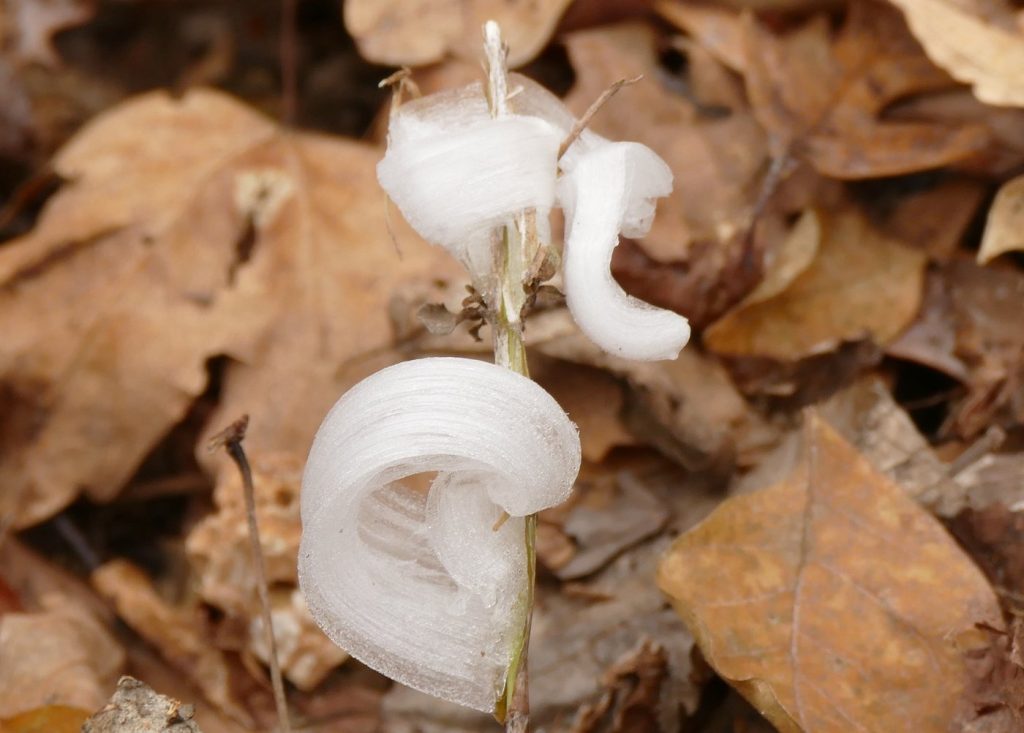The recent onset of wintry weather across the United States has not only brought snow and frigid temperatures but has also unveiled a rare and enchanting natural phenomenon known as frost flowers. These delicate formations are created when water from specific plant stems freezes, breaking through tiny slits and resulting in intricate, ice-like blooms that resemble spun glass or fluffy cotton candy. Their ephemeral nature means these formations can dissolve with the slightest touch and typically last only for a few hours, making them a sought-after sight for those who understand their fleeting beauty.
Frost flowers are predominantly found in the eastern half of the U.S., especially in the northern regions where hard freezes happen more frequently. Recently, during the cold snap on Monday and Tuesday, residents in states like Indiana, Missouri, and Tennessee shared images on social media showcasing their backyards adorned with these captivating frost formations, capturing the essence of a winter morning.
Alan Templeton, a professor emeritus at Washington University in St. Louis, Missouri, who specializes in conservation genetics, emphasizes the rarity of encountering frost flowers. He notes that one must be in the right place at the right time to witness them. "You see them and you know they’re going to be gone in an hour or two. So it’s this very ephemeral, but highly variable beauty," Templeton explains, highlighting the unique nature of each frost flower which makes them fascinating to observe.
According to Templeton, the appearance of frost flowers is contingent upon precise environmental conditions. The ground needs to be warm and moist enough for water to move from the plant’s roots into the stems. Simultaneously, the air temperature must dip low enough for the liquid to freeze, causing the stem to rupture and produce the eye-catching floral-like shapes. This phenomenon occurs only with certain types of plants, such as white and yellow wingstem, that possess stems capable of holding water during the colder months and have a comparatively weak structure to yield to the pressure from the ice.
Templeton recounts his first encounter with frost flowers decades ago while conducting fieldwork in the Missouri Ozarks. "They’re really beautiful," he says, adding that every frost flower is unique with no two being precisely the same. On a recent Monday, anticipating favorable conditions for frost flowers, he visited a conservation area in St. Louis County where he has previously observed hundreds of these formations. However, this year, he only found about two dozen, attributing the scarcity to them forming earlier than normal and the temperatures not dropping sufficiently.
Crystal Legens, a long-time Tennessee resident, shares her experience of stumbling upon frost flowers three years ago after relocating to a more rural area. Initially mistaking the formations for spider webs or silkworms while driving in McKenzie, located 47 miles northeast of Jackson, she was amazed to find they shattered upon contact. "People live here their whole life and they never even know that exist because they just never see them or they’re not in the right place at the right time," she observed, underlining the elusive nature of these natural wonders.
As winter sets in, the hunt for frost flowers continues, captivating the curious and encouraging them to venture outdoors in search of this unique atmospheric art. The delicate ice formations serve as a reminder of nature's intricate beauty that, while temporary, leaves a lasting impression on those fortunate enough to witness it.










